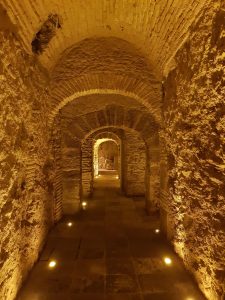Archaeologists who discovered a U-shaped toilet that could easily be used by 13 people at once in an ancient theatre in Turkey have now found a 2,000-year-old passage that served as an entrance to the same theatre.
The passage, known as a ‘vomitorium’, is 26 metres long, L-shaped and was situated below the tiered seats in the theatre in the ancient city of Smyrna, located in present-day Turkey’s third most populous city Izmir.
According to the experts, its role was to strengthen the rows of seats and help big crowds enter or exit the theatre rapidly at the beginning or end of a performance.
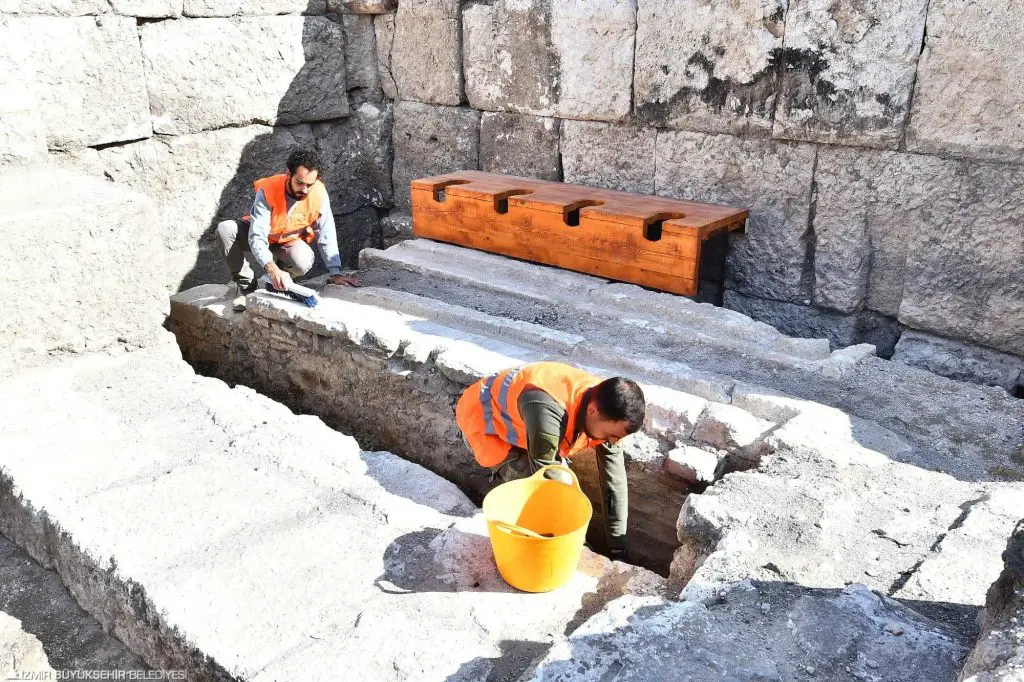
Additionally, the vomitorium, which was estimated to have been four metres wide, was discovered almost seven metres below houses at the site that had been expropriated and demolished.
After the archaeologists found the passage on the western side of the theatre, they now believe there should be an identical one on the eastern side as well.
Dr Akin Ersoy, a lecturer at the Archaeology Department of Izmir Katip Celebi University (IKCU), said: “There must also be an eastern vomitorium. We hope that we will uncover it during the 2022 excavations and thus encounter another architectural find that will highlight the 20,000 audience capacity of the Smyrna theatre.”
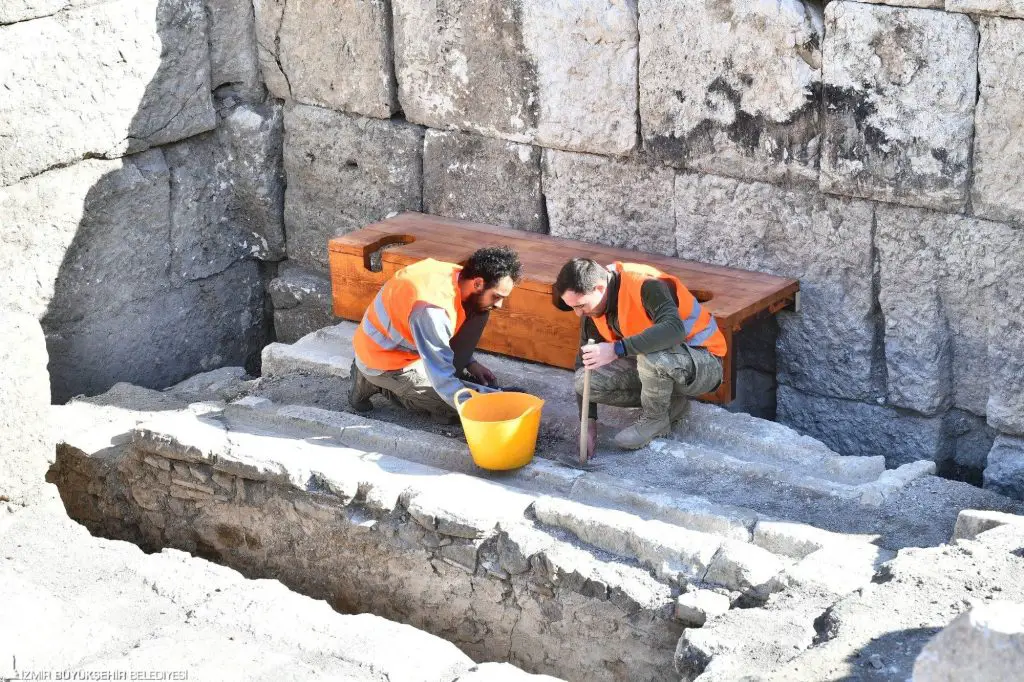
The archaeologist reported that the team came across two very important finds during the 2021 excavations and added: “In archeological terms, we identified a latrina, that is, a toilet. Such an example of a theatre with a toilet located in the stage building has not been encountered in any other theatre in the Mediterranean Basin. Then we found a vomitorium, or an underpass.
“We noticed it in some photographs taken in the area in the 1950s. We focused our work on our findings in the entrance section of the theatre. We have uncovered a building in a very good condition. We reached an underpass used by the audience coming from outside to reach the seating areas.”
Pointing out that the passage at the Smyrna theatre was built with arch and vault systems that usually form a ceiling, Dr Ersoy added: “The arch and vault systems were not used in Anatolia and the Mediterranean region before the Roman Period, except for a few examples. Most examples emerge with the Roman Period. There are new construction technologies that bring together mathematics and statics. We believe that vault and arch systems can be used easily in baths and other theatre structures built in the same period.
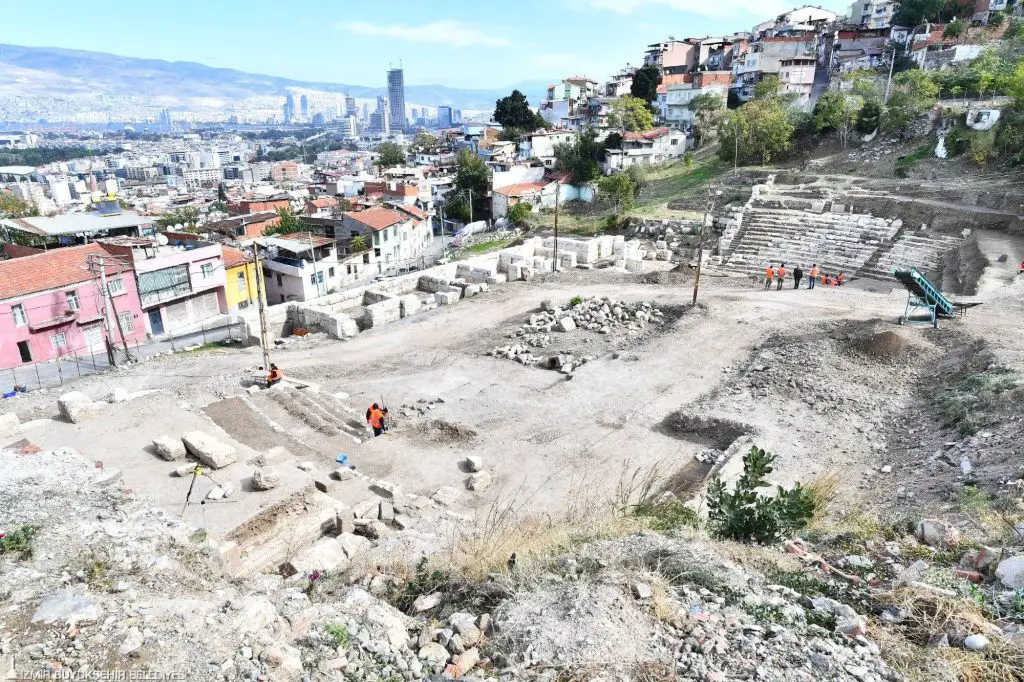
“As a result, we see that very large and high structures can be built. These structures were also used for people’s protection to shelter them from bad weather conditions.”
Dr Ersoy said the theatre is now slowly taking shape. He added: “At the beginning of the Roman Period in Anatolia, an architect named Vitruvius spoke highly of the theatre here. We knew before the excavations that we would encounter a theatre that deserves this praise.”
The theatre, which had a 20,000-spectator capacity, was built in the 2nd century BC, when Smyrna and Anatolia would have been under Roman authority.
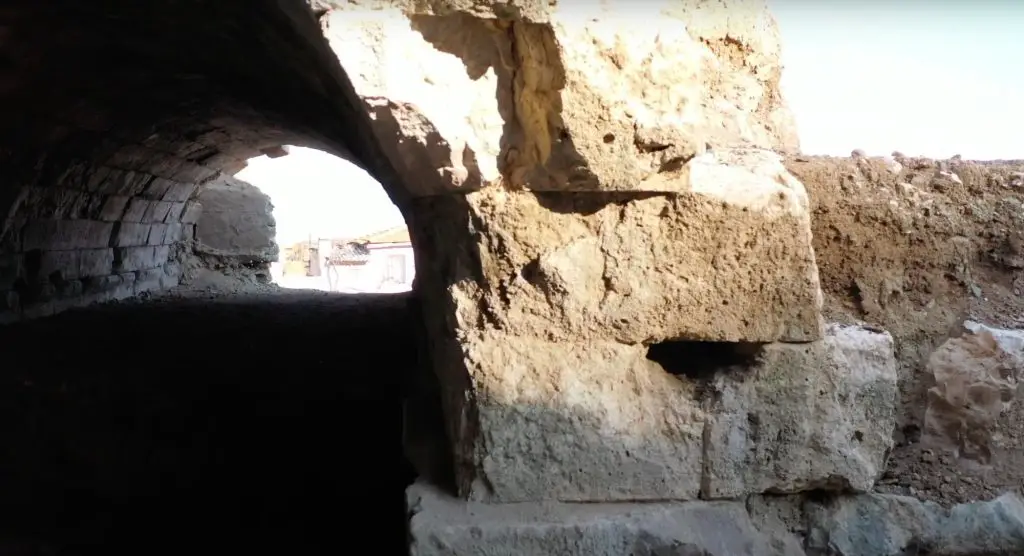
Aside from the vomitorium, a 1,800-year-old U-shaped latrine was unearthed in the ruins, which archaeologists believe could accommodate up to 13 people at once.

